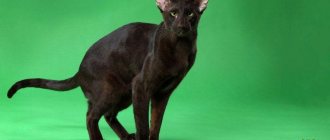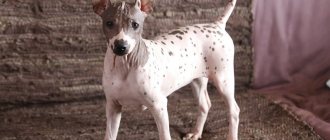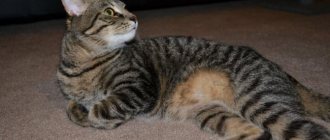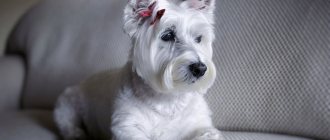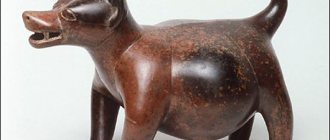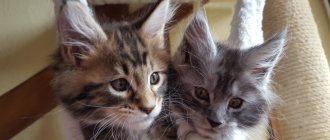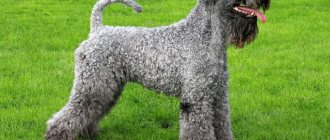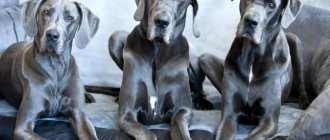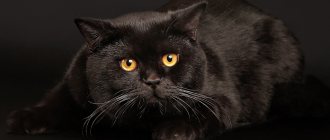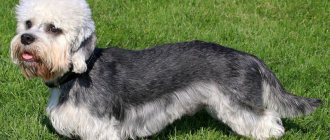The Irish Terrier is the oldest representative of dogs, bred and began its march around the world in distant and mysterious Ireland. An animal of medium size, with a perky character, emotionally open to people, reminiscent of an “eternal puppy”. The Irish Terrier is sometimes called the sun dog, “little devil,” because of his never-ending energy and always good mood.
- Many celebrities and historical figures have kept the Irishman as a pet and pet, including Jack London, Minister of Canada, Minister of Health of Italy.
In their homeland in Ireland, they are still held in high esteem; there is a popular expression about the terrier: “Every gentleman should have one, serve as a guardian for the poor, and be a friend to all farmers.”
History of the breed
Even the Irish themselves do not know where these small red dogs came from, and the animals are the national treasure of the country. To explain the origin, the inhabitants of Ireland came up with a legend that the dogs arrived on their lands to meet St. Patrick. Another version says that the red terrier is a smaller relative of the Irish wolfhound, or that the dog descended from the wire-haired terrier with tan. One way or another, the Irish Terrier was recognized as a separate breed only in 1870. Four-legged animals began to appear at exhibitions in 1875.
Until 1879, brown, black, white or two-color individuals could be seen in different parts of Ireland, and already in 1880 a breed standard appeared, which described the one-color red Irish Terrier. The dogs quickly became popular in Ireland, then they became known in Europe and nearby countries: the American writer Jack London dedicated two of his stories to red dogs, and Erich Maria Remarque also mentioned the breed in his novel “Three Comrades.” In the late 40s of the 20th century, terriers entered the territory of the former USSR.
Purpose of a dog
The Irish Terrier is a hunting breed. He can easily catch almost any small animal, for example, a rabbit, fox, hare . Previously, farmers successfully used terriers to protect their farms from small rodents. In addition, four-legged animals served as brave, brave defenders - without fear or doubt they guarded the owner’s possessions.
Red dogs distinguished themselves even during the war - they served as messengers in the English army. Today, these good-natured dogs with a strong nervous system are considered by many lovers of large dogs as excellent companions, friendly and gun dogs. Owners take representatives of the breed to exhibitions, where their charges often take prizes.
Mating
It is best to breed representatives of the breed when they are 2 years old. After the first heat, this should not be done, since the dogs may develop health problems, and there is a risk of getting sickly offspring.
For your information! As a rule, mating is carried out from the 11th to the 15th day of estrus.
The female is introduced to the male on neutral territory. After a long flirtation, the lady may allow the gentleman to hook up, but if this does not happen during a walk, then you still shouldn’t be upset. Pets need to be taken to the male dog’s territory, and then success is guaranteed. After a day or two, the mating needs to be repeated.
Female with puppies
What does an Irish Terrier look like - description of the breed
The Irish are known to be massive, but not coarse dogs, with wiry, short, coarse hair. The physique is athletic, not stocky, the bones are not broken. While running, the dog exhibits flexible speed, he is strong and resilient. Taking a closer look at the Irishman, you can feel a special attractive force, indicating the uniqueness of the breed. The height and weight of individuals may vary: the maximum weight of Irish males reaches 15 kg, females - 13 kg. The height at the withers is approximately 46-48 cm, but you can also find dogs 50-53 cm tall.
Standard
The Irish Red Terrier, which has an unusual color, can be seen from afar. According to the standards, pets have the following parameters:
- The body is lean, compact, the muscles are well developed, the back is strong and straight.
- The chest is wide and muscular.
- The head is elongated, the frontal part is not wide, tapering towards the nose. The transition “forehead-nose” is not clearly expressed - noticeable only in profile.
- The muzzle is oblong, parallel to the skull, the bridge of the nose is straight. The lips are close fitting and pigmented black. Scissor bite, strong and long jaws. The teeth are snow-white, large, and the fangs are powerful.
- The nose stands out, the earlobe is pigmented with a rich black color. Elongated hair grows on both sides, which forms a “whisker,” and there is a “beard” on the lower jaw.
- The eyes are small, round oval, located on the same front line. The cornea can be of different shades - from dark brown to jet black. The eyelids are dry and outlined with dark pigment. The look is inspiring, smart.
- The ears are set high and have triangular drooping tips. The shells are slightly raised on the cartilages, “looking” down, the outer edges are adjacent to the skull, continuing the line of the cheekbones.
- The neck is long, oval, widening towards the shoulders. The fur growing on both sides forms an elongated “mane”.
- The limbs are muscular, straight, not too long, and free at the joints. On the hind legs, the hock joints are located close to the ground. The toes form a noticeable “arch”, the claws are strong, hard, painted black, the pads are dense and elastic. The forelimbs are parallel to each other, the shoulders are elongated, well connected to the body, the pasterns are straight and shortened.
- The tail is thick, strong at the beginning of growth, becomes smaller at the end, overgrown with short hair. Located high, does not curl up into a ring, does not fall over on the back. The natural tail is slightly larger than average and is often docked at ¾ of the length.
Color and coat type
The Irish have red fur of different shades - it can be from red (copper, red) to wheaten. The standard provides an intermediate color - yellow-red. Colors not included in the list are disqualifying. The color of the dog should be uniform, monochromatic, while the ears may be darker than the main color, and tan markings on the chest are acceptable. There should be no spots on the paws.
The Irish have a hard coat that looks and feels like thin copper wire. The hair is slightly broken and does not curl. The fur has different lengths - on the jaws, forelimbs and sides of the neck it is slightly longer. On the remaining parts the hair is short, straight, and grows very densely. This uneven length gives the dog’s silhouette expressiveness and swiftness.
brief information
- Country: Ireland.
- FCI class: Terriers (section No. 1 – large and medium terriers).
- Use: companion, hunting dog
- Color: Red.
- Life expectancy: 13-15 years.
- Average weight: Males up to 13 kg, females up to 12 kg.
- Height: 46-48 cm.
- Price: 20,000-40,000 rub.
Photo: needpix.com
Distinctive character traits
The Irish have a strong nervous system, which is why they are used as gun dogs. Animals are very smart, learn quickly, remember a large number of commands and strictly follow the task assigned to them . Red terriers are not susceptible to motion sickness, unlike some other breeds. Breeders tried to breed the “ideal dog”, rejecting too aggressive and “nervous” Irishmen. As a result, the Irishman began to have the best character traits:
- courage;
- devotion;
- mind;
- poise;
- restraint;
- assertiveness;
- instant reaction;
- tirelessness;
- purposefulness.
Irish red dogs are known as “brave devils” due to their fearlessness, readiness to take off at any second to destroy the enemy. However, such a pet behaves well with its owner - it is affectionate and gentle, always ready for active games and fun. The advantages of the Irish also include their security and hunting qualities. The owners also note some disadvantages of their charges:
- pugnacity;
- vulnerability to mood swings;
- recklessness;
- assertiveness, irascibility.
- Chicken and nut salad - step-by-step recipes with grapes, cheese, banana or prunes
- What you need to have in your home in case of coronavirus quarantine
- Determine location by phone number
Temperament
Representatives of the Irish dog breed are very active, kind and cheerful, and have a choleric temperament. Animals spend most of their time in motion, so long walks are an essential condition for the future owner of such a pet. Like other terriers, the Irish are smart, but stubborn and willful, so they have difficulty fulfilling the owner’s demands if they do not see their interest or special need in this.
When surrounded by other dogs, the Irish need to be closely monitored, because they love to bully and can be the first to provoke a conflict. For the same reason, it is better not to leave representatives of this breed alone with small pets - such a “meeting” can end badly - the Irish in most cases perceive them as a subject of hunting.
Terriers of Irish origin get along well with children, they are tireless in games, and have an excellent sense of humor. However, the child must be older - although the dog is friendly and non-aggressive, it will be extremely difficult for small children to resist the dog’s strength. At home, the pet behaves patiently and restrainedly: without the encouragement of the owner, he will not impose his presence on the household. Natives from Ireland perfectly convey all feelings - love, patience, sadness, while they are excellent companions, watchmen, hunters, bloodhounds and service dogs.
The cocky temperament of a representative of the Irish breed needs to be tamed from childhood, but it is not necessary to fully train the puppy. A dog intended to be kept in a city apartment must be taught at least minimal skills, which include prohibiting and calling commands. By devoting time to such training, a person will receive an obedient and faithful Irish friend.
Pros and cons of the breed
Irish Terriers are popular all over the world as friendly and loyal pets. This dog is suitable for almost everyone, the main thing is that the owner provides activity, physical activity and, of course, care and love.
The main advantages of the Irish Terrier:
1. Devotion. 2. Playful, friendly disposition. 3. Absence of unjustified aggression. 4. Gets along with children. 5. Easy care. 6. Not expensive to maintain.
Relationships with a person
The Irish Terrier is distinguished by irrepressible energy, so if you hope that when you get a dog, you will calmly lie on the couch with it, then it is better to immediately discard the idea of buying such an animal. Athletes, tourists – people leading an active lifestyle – live comfortably with a dog of this breed. Thanks to their intelligence and endurance, the Irish will be useful to hunters. With proper training, dogs can even work for the police or rescue services .
Terriers are good with children. They can also get along with cats and dogs, but provided that the animals grew up together from early childhood. Otherwise, conflicts cannot be avoided, especially between individuals of the same sex. It is better not to let an Irish dog into a house where there are small pets or rodents, because the dog has very well developed hunting instincts.
Character and behavioral characteristics
Cairn Terrier: description of the breed, character of the dogs
It is difficult to determine exactly what motivates this dog - courage or recklessness. Even in the event of great danger, he will, without hesitation, rush into battle and achieve his goal.
Note! The breed is unpretentious in everyday life and very hardy.
The place where it lives is also of great importance for the Irish Terrier, which affects the character of the pet. If you keep a dog in an apartment, it will grow up calm and reserved. If you live in a large house with a spacious yard, your pet will have a cheerful and playful disposition.
Dog's active lifestyle
Important! If we are talking about the private sector, then you need to put up a very high fence, otherwise the terrier will jump over it and start exploring the territory outside the yard.
The dog really needs frequent and active walks. She does not need to be walked on a leash. The pet should run at a speed of about 40 km/h. The owner can get on a bicycle, and the pet will run after him with great joy.
Irish Terrier puppies
If you want to purchase a puppy, then it is better to contact nurseries or breeders who breed purebred Irish dogs with this question. When considering a dog as a pet, get to know its parents - this way you will understand what kind of temperament the animal will have. When you are hoping to buy an Irishman to attend exhibitions with, but you are not sure that you are well acquainted with the breed standards, invite an experienced dog lover to the deal.
When choosing a puppy, check the necessary documents - veterinary passport and birth certificate. In the passport you will find information about vaccination, the names of drugs used to prevent worms and fleas, and the dates of the procedures. Before buying a four-legged friend, keep in mind that puppies are born black; they only change color as they grow up. Healthy babies are active, stand firmly on their paws, and have clean ears and eyes.
Where can I buy
To be sure of the good health of your future pet, it is better to buy an animal from breeders in specialized nurseries, after first familiarizing yourself with the reputation of the chosen seller and customer reviews. You can find a purebred puppy that meets breed standards at the National Breed Club or individual kennels in Moscow and St. Petersburg:
- nursery “Red Wind” (St. Petersburg, tel.: +7 (911) 8239302);
- private nursery “Gryuspin” (Moscow, tel.: +7 (916) 9069459);
- nursery “Bon Aquarel” (St. Petersburg, tel.: +7(921)9973099);
- nursery “Do Mi Sol” (Moscow, tel.: +7(499)1982272).
How much are
Terriers can be bought secondhand through an advertisement on the Internet, at a poultry market, or selected from a nursery, but prices for four-legged ones will vary in all of these cases. The cost depends on the pedigree of the animal, the availability of documents, and the reputation of the nursery. The minimum price for a healthy male dog starts at $400. A show-class bitch or puppy can be purchased for $1,000. Babies with a “defective” color or any other defect are sold more cheaply - for 200-400 dollars.
- How to restore SNILS if lost - sample application and necessary documents
- Viagra analogue
- 16 working tips to improve your sleep
Health
They have fairly good health and good immunity, which makes it possible to practically not get sick throughout their lives; they have minor genetic predispositions:
- Hip dysplasia;
- Gastrointestinal diseases;
- Problems with the visual organs;
- Development of melanoma;
- Allergic reactions.
In some cases, after giving birth, bitches may experience endocrine problems. With proper and regular care, as well as timely vaccination, the animal can live up to 14 years.
Raising a pet
Representatives of the Irish breed are distinguished by their developed intelligence, so they are easy to train. However, teaching commands should take place exclusively in a playful way, because people from Ireland do not tolerate coercion. The results from training games will not take long to arrive. It is important to know that the “red devil” is a proud dog with a good memory, therefore, in order to avoid conflicts, it is better not to punish him.
If you decide to buy an Irish puppy as a pet, remember that you need to socialize it as early as possible - this will significantly increase the chance that the adult dog will be more tolerant. Terriers are active, so even with a puppy you can start playing any active dog games: agility, freestyle, bikejoring and others.
Training and education of the Irish
Irish Terrier puppies begin training at the age of 2 to 3 months, this is the ideal period for education and the beginning of training. You can practice on your own or with a specialist.
- Initially, you should start your lessons small, devoting no more than 10 minutes to one team. Alternate training with active games, with treats as a reward.
It is not recommended to use force or roughness; be patient and do not hit the dog. It is important to structure the training correctly and explain to the pet what is required of him. Regular repetition and a good mood will help you quickly master basic commands.
When the baby grows up, it is worth taking training more seriously; you can contact a specialist for a while, and then continue on your own. Classes can be held with other dogs or individually with a puppy.
- The dog is a capable student, he likes to study in the company of his owner, he will try in every possible way to please him. If you do not have enough experience in raising animals, it is recommended to immediately contact a dog trainer, otherwise you will not be able to explain to your pet what you want.
The Irish have a tendency to engage in unequal battles; they may not pay attention to the size of their opponent when the owner is in danger. During the classes they teach how to calm both the owner and the dog in such situations, which will help protect them from serious injuries.
Features of training
Dog handlers say that the Irishman does not need training as such. The dog is smart, owner-oriented - the correct explanation is important to him, then he will clearly complete the task. He carries out the commands that the Irish “red devil” has been taught since childhood through explanations rather than coercion with pleasure, and the dog perfectly remembers the characteristics and names of various objects. For example, he will be able to bring a toy of a certain color, even if he needs to choose it from several possible ones.
Dog breeders say that Irish owners do not need to train their dogs - it is important to establish partnerships and friendships. Dogs of this breed should not be given commands with special intonation - the dog will highlight the task set by the owner even in free speech. This kind of communication is important if you live in a city. The Irish Terrier can show willfulness during training, because the dog was “created” to be a partner for a person, and not a servant. An animal should be brought out of disobedience not by shouting, but by persistence and distraction.
Key points in training
The breed is intelligent, but difficult to train. To raise a terrier, you need experience and special knowledge. A novice owner is unlikely to cope with the stubbornness and mistrust of the Irishman. You need to be a strict, tough leader, capable of alternating carrots and sticks. If the Terrier sees strength in its owner, then it will follow him.
But this does not mean that the dog should be beaten. The Irish cannot tolerate cruelty and will respond with aggression and anger. To punish a pet, it is enough to talk to it seriously, express your dissatisfaction, deprive it of toys, treats, or even food.
If you already have a puppy, but there are no training skills, then it is better to contact a breed club or city canine organization. There, teachers will select a program for the pet and its owner. During classes, the dog and the person will learn to interact and listen to each other.
It is important to teach the dog basic commands, learn its nickname, and the names of household members. In order for the dog to remember his name, it is important to call him more often and communicate with him. It’s the same with other words - the more practice, the better the result.
Read about how to properly train a dog in the article: “Training a puppy: effective methods from dog handlers, learning commands at home.”
Care and maintenance
Representatives of the Irish breed feel good both in a private home and in a city apartment . In the warm season, the animal can be placed in an enclosure; under no circumstances should it be kept on a chain. Terriers tolerate frost and heat well, but the dog should not be left in extreme cold or under scorching rays for a long time. Representatives of the breed are active dogs, so do not forget about walks with your pet and adequate physical activity. Walking should be daily, at least three times a day, with one walk taking at least 1.5 hours.
As for caring for your pet, there is nothing complicated here: you even need to bathe it only after it gets into the mud. Ears and eyes are cleaned as needed, but it is better to examine them regularly. If you notice dark discharge, you should immediately contact your veterinarian. Claws are trimmed if they have not had time to sharpen naturally. Teeth are brushed once a week.
Trimming and grooming
Terriers have a short, thick, hard coat that requires grooming. Trimming helps remove dead hair, improve skin health and create hairstyle. For show dogs, such manipulations are performed once every 1.5-2 months; dogs that do not go to shows are clipped once every 6-7 months. During the procedure, hair is removed as much as possible, the face is pinched once a month, leaving a “mustache” and “beard”, and removing the hair around the eyes. The ears are also pinched and the edges trimmed with scissors. The fur between the toes is removed using a thinning tool.
How to choose a puppy and how much it costs
Prices for representatives of this breed vary greatly. Basically they range from 25 thousand to 50 thousand rubles*
However, before buying an Irish Terrier puppy, you need to fully study the information about who the Irish Terrier is, a description of the breed, the character and rules for caring for this pet, and also decide who you need - a boy or a girl.
Information about upcoming matings or available purebred puppies can be obtained from cynological centers or from breeders. It's also worth going to the exhibition. It all depends on what class of dog you need.
Champion
When choosing a pet you need:
- pay attention to his parents. If you want to buy a dog that will participate in exhibitions, then it must have good genes. It is necessary that parents be champions and have diplomas;
- It is worth carefully examining the baby himself to make sure that he is not sick. The future owner needs to hold the puppies in his arms, in case one of them recognizes the owner by playfully licking his face;
- if it is necessary to choose a show animal, then an expert who can determine the future champion should be invited to a meeting with the breeder. Breeders in this regard are an interested party, so you should not trust them when choosing a pet that will take part in competitions.
Note! It is necessary to take the baby home when he is 2 months old. By this time, you need to buy all the things he needs and prepare his habitat.
Diet
Representatives of this breed are very unpretentious in food, but in order to avoid possible problems with the gastrointestinal tract, you need to carefully select the diet for them. When creating a menu, be guided by the following rules:
- food should be unsalted and low-fat;
- a couple of times a week you need to give your dog boneless fish (make minced fish fillets from small fish);
- the basis of the diet is veal, poultry, beef;
- it is important to add vegetables and herbs to your food, which are a natural source of vitamins;
- There should be no boiled cereals and soups in the diet;
- The recommended number of meals is 2 times a day, with most of the food being best given in the first half of the day;
- Every Irish dog should always have a bowl of clean, raw water available.
How to feed puppies correctly
It is important to provide terrier puppies with adequate nutrition until they are one year old, because during this period they are actively growing and developing physiologically. It is advisable to give children the most natural products possible: raw meat, sea fish, cereals, eggs, cottage cheese, raw vegetables and fruits. Under no circumstances should you feed your animal pork, spices, smoked or fatty foods . It is not recommended to include pies, bread, potatoes, and legumes in the menu.
An Irish puppy up to 5 months of age should be fed 4 times a day, up to 7 months - 3 times, by a year the frequency of feeding should be 2 times a day. You should not overfeed the animal, and any remaining food in the bowl must be removed before the next meal. You can give your baby ready-made food - canned food or dry food, but both products must be suitable for the dog’s age: for each age group, a certain composition is calculated, thanks to which the terrier’s body develops and forms correctly.
Feeding
Dry food is ideal for them; it is already balanced and completely suitable for terriers with their physical activity. Premium food is preferred. Feed calculations are based on the weight and age of the pet.
Adult dogs eat 2 times a day, and they should always have access to clean, drinking water.
Small puppies eat 4 - 5 times a day, in small portions; with age, the portions increase and the frequency decreases.
- As a treat you can use: dry food, cheese, boiled chicken breast, divided into small parts.
It is prohibited to give:
- Tubular bones;
- Fat meat;
- Sweet, flour;
- Spicy, salty, smoked;
- Bread and cookies;
- Fatty dairy products;
- River fish;
- Citrus.
It is important to remember that proper nutrition is the key to health; you should not overfeed your dog or feed it table scraps.

